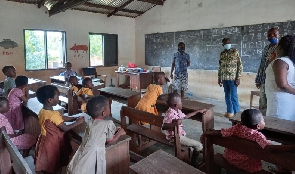“A curriculum is considered the ‘heart’ of any learning institution which means that schools or universities cannot exist without a curriculum. With its importance in formal education, the curriculum has become a dynamic process due to the changes that occur in our society.”
The curriculum could be described as a list of subjects, learning areas, and courses of study. The syllabus outlines everything that the teacher needs to teach to his/her class. It must be argued here that this content-prescriptive approach limits the scope of teachers to really personalize the learning.
Although there is no single definition that can be used to holistically explain this complex phenomenon known as curriculum, it can be simply referred to as a course of study or plan for what is to be taught in an educational institution (Wiles, “Bondi in Curriculum Development: A Guide to Practice”, 1998).
According to Gatawa in the book “The Politics of the School Curriculum: An Introduction” (1990), the curriculum is general in nature, for it encompasses all societal speculations about knowledge and what constitutes it. Knowledge should have a basis as determined by society.
However, because knowledge is dynamic as it constantly changes with the coming on board of new truths in the ever-changing universe, policymakers should always be privy to any shift in expectation, so that what is considered as knowledge remains relevant to societal needs
Relevance is our big challenge now:
The greatest challenge we face today is relevance. Our students require a curriculum that provides them with meaningful experiences, that engender deep and significant learning.
It has to be relevant and responsive to the age in which we live. In other words, it must educate for life.
Technology keeps on changing how we live. And that, the only possession we have that keeps us going is our potential.
Students therefore have to take opportunities for new learning initiatives and improve upon what they have already. The job market keeps on changing. What students learn at school should therefore be geared towards preparing them for the needs of the community. This calls for a dynamic and relevant curriculum.
As an educator, I am happy to hear of changes being promised by the governments/political parties fighting for votes from the electorate in both Ghana and Ontario in the school curriculum to meet the needs of our students to prepare them adequately for national development.
Those changes in their school curriculum could be described as humble beginnings of making the school curriculum more relevant to the needs of the changing world.
Ghana has embarked upon a new standards-based curriculum for kindergarten to Class 6 in primary schools for the past four years or so.
This curriculum embodies the best practices from all over the world and focuses on making Ghanaian children confident, innovative, creative-thinking, digitally literate, well-rounded, and patriotic citizens. Mathematics, Science, Reading, Writing, and Creativity are, therefore, at the heart of this new curriculum.
Also, the two major political parties campaigning for the 2024 Presidential cum Parliamentary elections in Ghana are vigorously through their manifestos promising the nation new opportunities (technological improvements) in the education system of the country to meet the needs of every student in the country.
We pray that both political parties (the incumbent NPP and the opposition NDC) stay faithful to their promises in education when they win the coming December 7 elections
In Ontario, it is reported that for the past six years, college graduates have overtaken university graduates in securing better employment.
This is partly due to the nature of courses offered at the college which are more hands-on and meet the present needs of the community.
Rising Graduate Unemployment in Ghana:
World Bank report on Ghana in 2016 laments the growing youth unemployment in Ghana. It says 48% of Ghanaian youth are jobless.
The report reveals, “In Ghana, youth are less likely than adults to be working in 2012, about 52% of people aged 15-24 were employed (compared to about 90% for the 25-64 population), a third were in school, 14% were inactive and 4% were unemployed actively looking for a job.
Young women in the same age group are particularly disadvantaged and have much higher inactivity rates than men: 17% of young females are inactive as opposed to 11% of males,”
It recommended that “government must work towards equipping the youth with relevant skills through the educational system.”
Obviously, policymakers are confused about what the real issues are and what, possibly could be done about them. It must be noted here that Ghana is not the only country battling with the rise in graduate unemployment.
Ghana now has free Senior High School education to help all her citizens of school-going age to access secondary education.
This means there will be more High School graduates in our Universities and Colleges than before free secondary education was introduced in the country. To curb the growing graduate unemployment in the country, the school curriculum ought to be reshaped to cater to the needs of the Ghanaian community.
Numeracy and literacy, science and technology, visual arts and performing arts, social studies, and vocational studies must all be given respectable emphasis in the development of the school curriculum.
The other big factor that influences quality education is well-trained and adequately motivated teachers.
It is obvious that a well-motivated and remunerated teacher is at the centre of our quality education and comprehensive teacher policy in any country that seeks development and advancement in technology.
The fact is that there is always the need to maintain the professionalism of teachers through adequate incentives and continuous professional development.
Our communities are undergoing radical changes as technology advances.
Schools, colleges, and universities ought to acknowledge such changes and make what students are taught in these formal institutions of learning more relevant to the needs of the community
Opinions of Saturday, 12 October 2024
Columnist: Joe Kingsley Eyiah



















